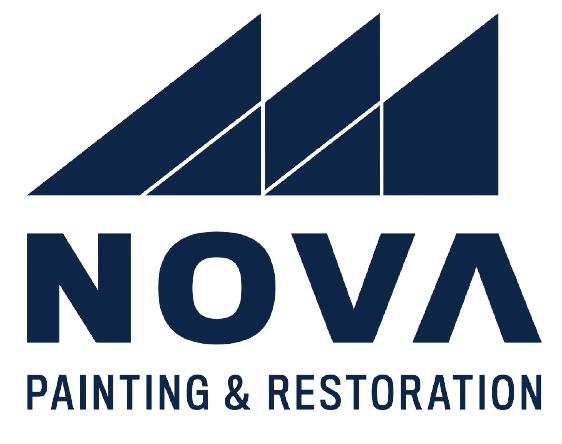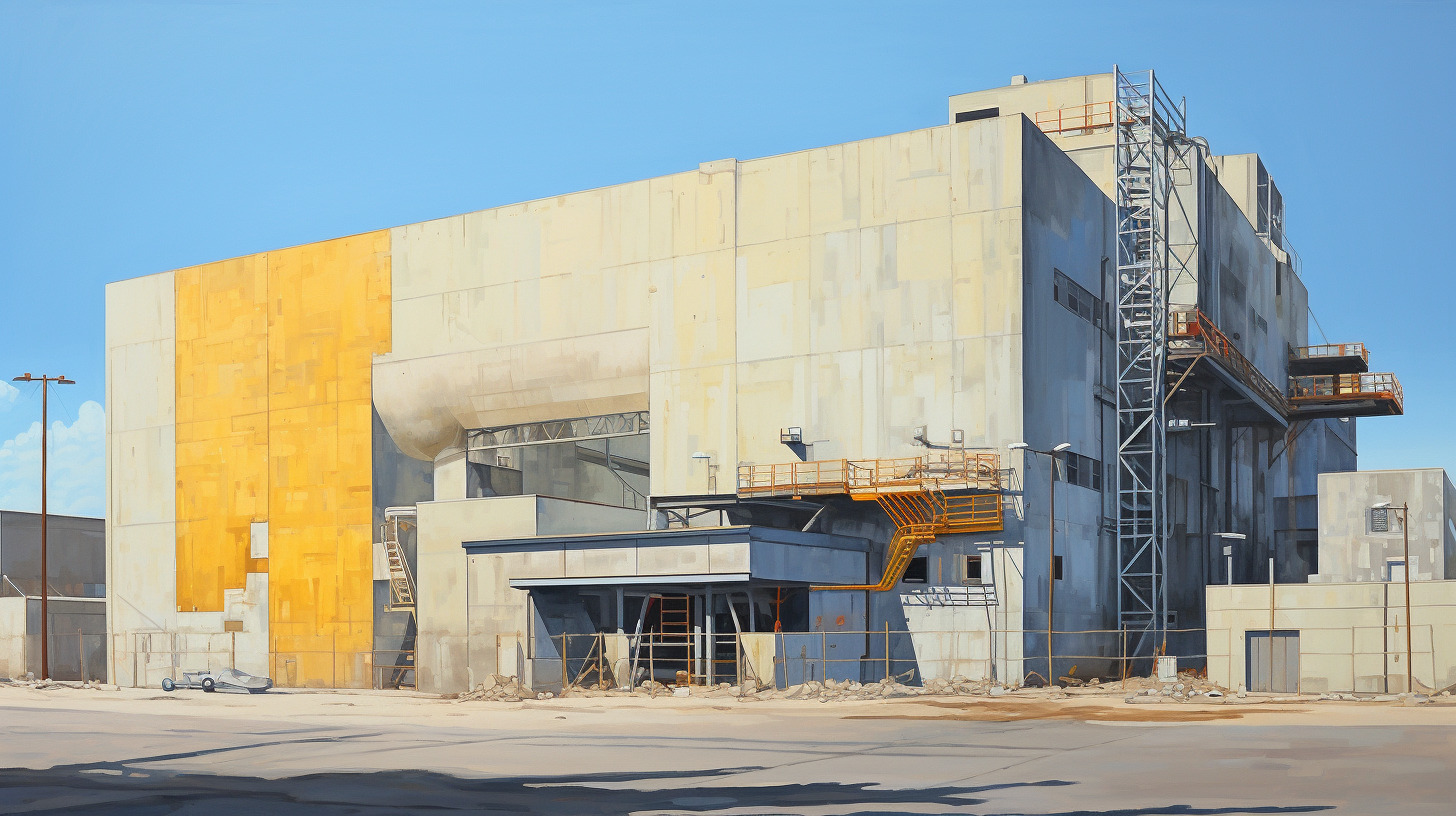Industrial painting stands out as a pivotal element in safeguarding and enhancing the aesthetic appeal of various industrial structures and equipment. It goes beyond the ordinary paint job, delving into a realm that ensures longevity, protection, and an undeniable allure to the infrastructural elements of a business. The process involves the application of specialized coatings that are designed to withstand harsh industrial conditions, ranging from extreme temperatures and corrosive substances to constant wear and tear. Industrial painting finds its relevance across diverse industries, offering a universal solution to a common set of challenges.
By adopting industrial painting, businesses are making a strategic investment towards maintaining their assets in pristine condition, ensuring they remain functional and visually appealing for an extended period. This not only translates to operational efficiency but also projects a positive image to clients, stakeholders, and employees. A well-maintained facility speaks volumes about the values and standards upheld by a business, making industrial painting a silent yet powerful communicator of professionalism and attention to detail.
With its roots deeply embedded in both protective and aesthetic realms, industrial painting emerges as an indispensable practice for businesses looking to thrive in competitive markets.
Navigate Content
Understanding the Dual Role of Aesthetic and Protective Shield
The Importance of Aesthetics in Business
First impressions are vital in the world of business, and the external appearance of your facilities plays a crucial role in shaping perceptions. Industrial painting steps in as a transformative tool, turning drab, worn-out structures into vibrant, inviting spaces. This metamorphosis not only catches the eye but also communicates a message of professionalism and meticulous care.
The aesthetics of your business premises act as a silent ambassador, narrating a story about your brand and its values. A well-executed industrial paint job can elevate the visual appeal, making your facilities stand out in a sea of monotony. It’s a visual feast that can capture attention, create a lasting impression, and subtly influence decisions.
Protective Benefits of Industrial Painting
Beyond the surface, industrial painting offers a robust shield, safeguarding structures and equipment from the ravages of time and environment. This protective layer wards off corrosion, weather damage, and other detrimental effects, ensuring longevity and durability. It’s an investment towards maintaining the structural integrity of your assets, preventing premature wear and tear.
Industrial painting acts as a guardian, preserving the lifespan of your equipment and structures, and in doing so, it translates to significant cost savings in the long run. It’s a proactive approach to maintenance, eliminating the need for frequent repairs and replacements. This protective layer serves as a resilient barrier, ensuring that your business operations run smoothly, free from unexpected disruptions caused by equipment failure or structural issues.
By embracing the dual role of industrial painting, businesses are investing in a future where aesthetics and protection go hand in hand, ensuring a seamless blend of form and function.
Financial Implications: The Cost-Effectiveness of Industrial Painting
Industrial painting, while requiring an upfront investment, proves its worth in the grand scheme of things, showcasing a remarkable level of cost-effectiveness. This section delves into the financial dynamics of industrial painting, unraveling the initial costs, long-term savings, and the overall return on investment.
Initial Investment vs. Long-Term Savings
Embarking on an industrial painting project necessitates a substantial initial investment. This encompasses the costs of materials, labor, and potential downtime during the application process. However, when viewed through the lens of long-term benefits, this investment stands justified.
The protective properties of industrial coatings extend the lifespan of structures and equipment, resulting in fewer repairs and replacements. This translates to significant cost savings over time, as the need for maintenance is drastically reduced. The initial investment in industrial painting paves the way for a future where operational costs are kept at a minimum, ensuring financial stability and sustainability.
ROI: Making the Numbers Work for You
The return on investment (ROI) for industrial painting is tangible and substantial. By safeguarding assets and enhancing their longevity, businesses experience a direct impact on their bottom line. Real-life examples and case studies have demonstrated time and again how industrial painting contributes to financial savings and operational efficiency.
Here’s a study showcasing the financial benefits of industrial painting, providing quantifiable data and insights on its positive impact on businesses across various industries. By meticulously maintaining their facilities and equipment through industrial painting, companies have reported a noticeable reduction in maintenance costs, alongside an increase in asset lifespan.
This section not only highlights the cost-effectiveness of industrial painting but also provides a clear, data-backed perspective on why it’s a wise financial decision for businesses aiming for long-term success.
Key Takeaway: Industrial painting stands as a smart investment, offering businesses a pathway to financial savings, operational efficiency, and a robust return on investment. By understanding the initial costs and embracing the long-term benefits, companies can unlock the full potential of industrial painting, turning it into a strategic asset for success.
Best Practices in Industrial Painting
Industrial painting is a precise practice that requires attention to detail, the right materials, and proper technique. In this section, we will explore the best practices in the field, ensuring that businesses can achieve high-quality results that stand the test of time.
Pre-Painting Preparations and Considerations
The foundation of a successful industrial paint job lies in thorough preparation. The surface to be painted must be meticulously cleaned and treated to ensure proper adhesion of the paint. This often involves sandblasting or power washing to remove old paint, rust, and other contaminants. Choosing the right type of paint and equipment is also crucial, as different materials require different treatments.
For instance, metals exposed to harsh outdoor conditions will require a different type of paint than an indoor concrete floor. It’s important to consult with professionals or do thorough research to determine the best materials for your specific needs.
Application Techniques for Optimal Results
The application of industrial paint is a skill honed with experience. Using the right technique ensures an even, durable finish that will last for years. This could involve using sprayers, rollers, or brushes, depending on the surface and type of paint used.
Professionals in the field have a wealth of knowledge and tips to share, ensuring that the job is done right the first time. For example, it’s important to pay attention to the weather conditions when painting outdoors, as extreme temperatures or humidity can affect the final result.
Addressing the Challenges: Making the Right Choices
Choosing to invest in industrial painting is a big decision, and it comes with its set of challenges. This section addresses common concerns and provides guidance on making informed choices.
Finding Reliable Information and Experts
With so much information available online, it can be overwhelming to determine what’s reliable. It’s crucial to seek out reputable sources and consult with professionals in the field. Look for companies with a strong track record, and don’t hesitate to ask for references or examples of previous work.
When it comes to industrial painting, experience matters. Choosing a company with a proven history ensures that you’re getting quality workmanship and materials.
Deciphering the Industry Jargon
The world of industrial painting is filled with technical terms and jargon that can be confusing. Understanding these terms is key to making informed decisions about your project. This glossary provides clear definitions for common terms used in the field, empowering you to communicate effectively with professionals and ensure that you’re getting exactly what you need.
Future-Proofing Your Investment
Investing in industrial painting is a long-term decision, and it’s important to take steps to ensure that your investment pays off for years to come.
Maintenance and Upkeep
A high-quality industrial paint job can last for years, but it’s not set-it-and-forget-it. Regular maintenance and inspections ensure that any potential issues are addressed before they become major problems. This could involve cleaning, touch-ups, or more comprehensive repairs.
By proactively maintaining your painted surfaces, you extend their lifespan and ensure that they continue to protect and enhance your facilities.
Innovations and Trends in Industrial Painting
The field of industrial painting is constantly evolving, with new technologies and materials being developed all the time. Staying up to date on these trends ensures that you’re getting the best possible service and materials for your money.
For example, recent advancements have led to the development of coatings that are more durable, environmentally friendly, and easier to apply. These innovations not only improve the quality of the finished product but can also reduce costs and downtime during the application process.
Key Takeaway: Investing in industrial painting is a strategic decision that pays dividends in the long run. By following best practices, addressing challenges head-on, and staying informed on industry trends, businesses can ensure that their investment in industrial painting delivers optimal results for years to come.
The Industrial Painting Advantage
Industrial painting is more than just a facelift for your facilities; it is an investment that empowers your business, protects your assets, and enhances your brand image. In this final section, we will wrap up the discussion by highlighting the undeniable advantages of industrial painting for businesses, ensuring that you are well-equipped to make an informed decision.
Summarizing the Key Takeaways
Throughout this guide, we have explored the multifaceted benefits of industrial painting, from its aesthetic appeal and protective qualities to its cost-effectiveness and role in best practices. Industrial painting stands out as a wise investment for businesses looking to boost their operations, safeguard their infrastructure, and make a lasting impression on customers and clients.
Industrial painting enhances the aesthetic appeal of your facilities, creating a positive first impression and reinforcing your brand identity. It acts as a protective shield, guarding against weather, corrosion, and wear and tear, thereby extending the life of your assets. Furthermore, it proves to be a cost-effective solution, with long-term savings outweighing the initial investment.
By adhering to best practices in surface preparation, material selection, and application techniques, and by staying informed on industry trends and innovations, businesses can maximize the benefits of their industrial painting projects. Addressing the challenges head-on and making informed choices ensures a successful outcome and a solid return on investment.
Key Takeaway: Industrial painting is a strategic investment that delivers a multitude of benefits for businesses. From enhancing aesthetics and providing protection to ensuring cost-effectiveness and adhering to best practices, industrial painting is a powerhouse tool that empowers businesses to thrive.
FAQs
How often should industrial painting be redone?
The frequency of repainting depends on various factors including the type of paint used, the environmental conditions, and the level of wear and tear. Regular inspections can help determine when a repaint is necessary.
Can industrial painting be customized to represent my brand colors?
Yes, industrial paints are available in a wide array of colors, and they can be custom-mixed to match your brand’s specific color palette.
What are the environmental impacts of industrial painting, and how can they be mitigated?
Some industrial paints contain volatile organic compounds (VOCs) that can contribute to air pollution. Opting for low-VOC or VOC-free paints is an environmentally responsible choice.
How does industrial painting contribute to workplace safety?
Certain types of industrial paint provide additional safety benefits, such as slip resistance on floors or fire resistance on structural elements.
What are the most common mistakes businesses make when it comes to industrial painting?
Common mistakes include skimping on surface preparation, using the wrong type of paint, and not adhering to proper application techniques.





